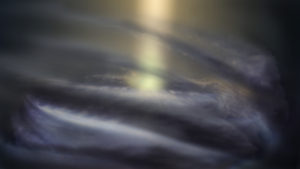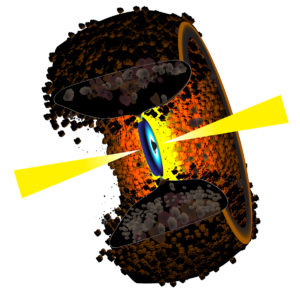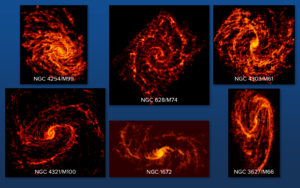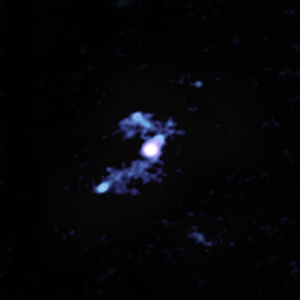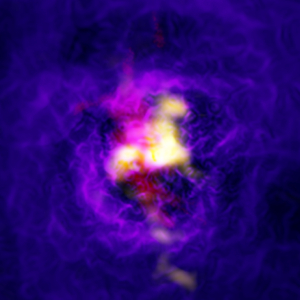New ALMA observations provide an unprecedented close-up view of a swirling disk of cold interstellar gas rotating around a supermassive black hole.
Cool, Nebulous Ring around Milky Way’s Supermassive Black Hole
New ALMA observations reveal a never-before-seen disk of cool, interstellar gas wrapped around the supermassive black hole at the center of the Milky Way.
VLA Makes First Direct Image of Key Feature of Powerful Radio Galaxies
A dusty, doughnut-shaped feature long thought to be an essential part of the “engines” at the cores of active galaxies, is seen for the first time in one of the most powerful galaxies in the Universe.
What 100,000 Star Factories in 74 Galaxies Tell Us about Star Formation across the Universe
ALMA is revealing new insights into the relationship between star-forming clouds and their host galaxies.
Trans-galactic Streamers Feeding Most Luminous Galaxy in the Universe
New ALMA data reveal distinct streamers of material being pulled from three smaller galaxies into the larger galaxy W2246-0526, the most luminous known galaxy in the universe.
Galaxy-Scale Fountain Seen in Full Glory
A billion light-years from Earth lies one of the universe’s most massive structures, a giant surrounded by a sprawling…







